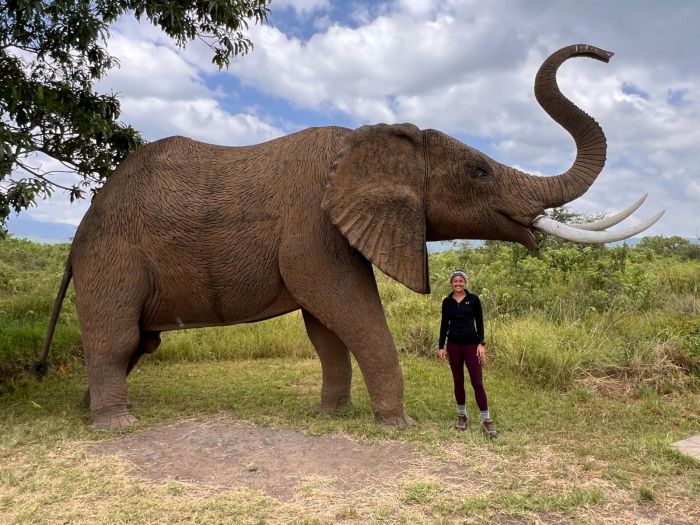
It’s always important to be vigilant while driving, but some days of the year require extra caution. Even if you’re a skilled and experienced driver, some days pose unique challenges due to changing weather and traffic conditions. In order to truly stay safe while driving, you do not only need to work on your personal skills, but must also pay close attention to the changing conditions around you.
“Driving safely is not just a matter of having the proper skill set, but also paying close attention to the surrounding conditions,” says Nigel Tunnacliffe, co-founder and CEO of Coastline Academy, the nation’s largest and fastest-growing driving school. “Slipping into a routine can be dangerous, especially when changing conditions require us to take a different approach. Being vigilant, well-prepared, and taking an active rather than a reactive approach are all crucial to staying safe during suboptimal driving conditions.”
While there is always an element of risk while driving, certain days of the year present even experienced drivers with unique challenges. Approaching these days with caution and preparation can be lifesaving.
Following is a list of some of the year’s worst driving days and tips on how to navigate them:
New Year’s Eve.
New Year’s Eve is notorious for being one of the year’s most difficult driving days, as it combines a number of factors that place drivers at an increased risk. For one, New Year’s festivities often involve alcohol consumption, leading to a generally greater proportion of impaired drivers on the road. Moreover, the nature of New Year’s celebrations causes people to stay out after midnight, resulting in them driving home late, when they are fatigued, and visibility is at its lowest.
When you factor in the reduced visibility and stopping distance caused by wintry conditions, there are many potential dangers to account for. For these reasons, it’s important to plan out any New Year’s activities beforehand, including sorting out any designated drivers or overnight accommodations.
Black Friday.
Black Friday not only comes with increased traffic on the road, but within parking lots as well. Although parking lot driving is much slower than driving on the road, accidents can still be harmful and even fatal, and are often more difficult to prevent due to the sheer commotion. Drivers do not only need to watch out for other cars, but also for pedestrians, who often move in unpredictable ways. While the safest option is to opt for online shopping, if you do plan to go out to a store, there are a few important precautions to take.
Choosing a parking spot that is further away from the storefront can separate you from the busyness, reducing your chances of being hit or hitting anyone when backing out. When you are backing out, moving slowly and continuously, avoiding any sudden or unpredictable movements, and continuously checking your windows and mirrors will help ensure that you do not collide with any cars or pedestrians. If you have passengers, ask them to help you monitor your blind spots.
Summer Days
Although the summer months do not pose the same environmental hazards as the winter months, they come with their own unique sets of challenges. For one, the increase in construction projects introduces additional hazards, creating congestion and disrupting familiar routes. Construction projects often come with reduced speed limits, so staying vigilant and adhering to these new limits is highly important.
Summer months also typically involve a higher proportion of drivers on the road more generally. People tend to drive both faster and more often during the summer months, and weather conditions such as the glare of the sun can make these activities more dangerous.
“Safe driving is all about being aware of who you’re sharing the road with and what the particular rules of your state are,” says Tunnacliffe. “In addition to typical precautions of staying aware and not driving aggressively, familiarizing yourself with state driving standards and understanding any changes in rules between states before you travel is essential to assessing risks during the summer months.”
Fourth of July
The Fourth of July is another day that poses a unique challenge to drivers. It is quite common for Fourth of July celebrations to take place at outdoor venues, sometimes with less formal parking arrangements. This, combined with late hours, a mix of vehicular and pedestrian traffic, and alcohol consumption, can result in serious dangers. When planning your Fourth of July celebration, try to opt for a venue that is nearby and has good accommodations for parking.
If you are planning to host a party–especially if there will be alcohol involved–it is prudent to remind your guests to arrange for designated drivers or alternative accommodations in advance of the date. If you notice that someone who has been drinking appears as if they are planning to drive home, do not, under any circumstances, allow them to drive: instead, try to arrange different plans for them, bringing in other friends or family members of theirs to help ease the planning process.
Rainy Days
Rain can decrease your car’s traction on the road, increasing the risk of hydroplaning. When combined with the general lack of visibility, this can be highly dangerous. To prevent hydroplaning, drive at a reduced speed and avoid sharp turns and sudden braking.
“In the event of hydroplaning or skidding, the most important thing to do is to stay calm and avoid sudden movements,” says Tunnacliffe. “Rapidly turning the steering wheel only further exacerbates the loss of control: instead, be smooth with steering and braking. Hydroplaning can be a frightening experience, but staying calm allows you to regain control and avoid getting into a serious accident.”
Although conditions change dramatically throughout the year, the basic principles of safe driving are evergreen. Paying close and consistent attention, using turn signals, avoiding sudden movements, and staying within the speed limits are all highly important for accident prevention. Keeping these basic principles in mind and then making adjustments based on the particular external conditions will help you quickly adapt and keep yourself and your family safe in any weather.














